A Class-J Power Amplifier Implementation for Ultrasound Device Applications
Abstract
:1. Introduction
2. Materials and Methods
2.1. Analysis of the Class-J Power Amplifier
2.2. Schematic of the Class-J Power Amplifier
3. Results
3.1. Performance Analysis
3.2. Pulse-Echo Analysis
4. Conclusions
Author Contributions
Funding
Acknowledgments
Conflicts of Interest
References
- Hoskins, P.R.; Martin, K.; Thrush, A. Diagnostic Ultrasound: Physics and Equipment; Cambridge University Press: Cambridge, UK, 2019. [Google Scholar]
- Rumack, C.M.; Levine, D. Diagnostic Ultrasound E-book; Elsevier Health Sciences: Oxford, UK, 2017. [Google Scholar]
- Daniels, J.M.; Hoppmann, R.A. Practical Point-of-care Medical Ultrasound; Springer: New York, NJ, USA, 2016. [Google Scholar]
- Shung, K.K. Diagnostic Ultrasound: Imaging and blood flow measurements; CRC Press: London, UK, 2015. [Google Scholar]
- Miele, F.R. Ultrasound Physics and Instrumentation; Pegasus Lectures, Inc.: Forney, TX, USA, 2013. [Google Scholar]
- Zhou, Q.; Lam, K.H.; Zheng, H.; Qiu, W.; Shung, K.K. Piezoelectric single crystal ultrasonic transducers for biomedical applications. Prog. Mater. Sci. 2014, 66, 87–111. [Google Scholar] [CrossRef] [PubMed] [Green Version]
- Qiu, W.; Yu, Y.; Tsang, F.K.; Sun, L. A multifunctional, reconfigurable pulse generator for high-frequency ultrasound imaging. IEEE Trans. Ultrason. Ferroelectr. Freq. Control. 2012, 59, 1558–1567. [Google Scholar] [CrossRef] [PubMed]
- Qiu, W.; Yu, Y.; Chabok, H.R.; Liu, C.; Tsang, F.K.; Zhou, Q.; Shung, K.K.; Zheng, H.; Sun, L. A Flexible Annular-Array Imaging Platform for Micro-Ultrasound. IEEE Trans. Ultrason. Ferroelectr. Freq. Control. 2012, 60, 178–186. [Google Scholar] [CrossRef] [Green Version]
- Szabo, T.L. Diagnostic Ultrasound Imaging: Inside Out; Elsevier Academic Press: London, UK, 2013. [Google Scholar]
- Iniewski, K. Medical Imaging; Wiley Online Library: Hoboken, NJ, USA, 2009. [Google Scholar]
- Smith, N.B.; Webb, A. Introduction to Medical Imaging: Physics, Engineering and Clinical Applications; Cambridge University Press: Cambridge, UK, 2010. [Google Scholar]
- Qiu, W.; Wang, X.; Chen, Y.; Fu, Q.; Su, M.; Zhang, L.; Xia, J.; Dai, J.; Zhang, Y.; Zheng, H. A Modulated Excitation Imaging System for Intravascular Ultrasound. IEEE Trans. Biomed. Eng. 2016, 64, 1935–1942. [Google Scholar] [CrossRef]
- Reynaert, P.; Steyaert, M. RF Power Amplifiers for Mobile Communications; Springer Science and Business Media LLC: Berlin/Heidelberg, Germany, 2006. [Google Scholar]
- Choma, J. Electrical Networks: Theory and Analysis; Wiley-Interscience: Hoboken, NJ, USA, 1985. [Google Scholar]
- Eroglu, A. Introduction to RF Power Amplifier Design and Simulation; CRC Press: Boca Raton, FL, USA, 2018. [Google Scholar]
- Raghavan, A.; Srirattana, N.; Laskar, J. Modeling and Design Techniques for RF Power Amplifiers; Wiley: Hoboken, NJ, USA, 2007. [Google Scholar]
- Lee, T.H. The Design of CMOS Radio-Frequency Integrated Circuits; Cambridge University Press: Cambridge, UK, 2006. [Google Scholar]
- Razavi, B. RF Microelectronics; Prentice Hall: Upper Saddel River, NJ, USA, 2011. [Google Scholar]
- Park, J.; Hu, C.; Li, X.; Zhou, Q.; Shung, K.K. Wideband linear power amplifier for high-frequency ultrasonic coded excitation imaging. IEEE Trans. Ultrason. Ferroelectr. Freq. Control. 2012, 59, 825–832. [Google Scholar] [CrossRef]
- Choi, H. Development of a Class-C Power Amplifier with Diode Expander Architecture for Point-of-Care Ultrasound Systems. Micromachines 2019, 10, 697. [Google Scholar] [CrossRef] [Green Version]
- Thomas, R.E.; Rosa, A.J.; Toussaint, G.J. The Analysis and Design of Linear Circuits; Wiley Publishing: Hoboken, NJ, USA, 2011. [Google Scholar]
- Benoit-Bird, K.J.; Au, W.W.L. Echo strength and density structure of Hawaiian mesopelagic boundary community patches. J. Acoust. Soc. Am. 2003, 114, 1888–1897. [Google Scholar] [CrossRef]
- Christoffersen, C.; Wong, W.; Pichardo, S.; Togtema, G.; Curiel, L. Class-DE Ultrasound Transducer Driver for HIFU Therapy. IEEE Trans. Biomed. Circuits Syst. 2015, 10, 375–382. [Google Scholar] [CrossRef]
- Cripps, S.C. Advanced Techniques in RF Power Amplifier Design; Artech House: Norwood, MA, USA, 2002. [Google Scholar]
- Agbossou, K.; Dion, J.-L.; Carignan, S.; Abdelkrim, M.; Cheriti, A. Class D amplifier for a power piezoelectric load. IEEE Trans. Ultrason. Ferroelectr. Freq. Control. 2000, 47, 1036–1041. [Google Scholar] [CrossRef]
- Dong, X.; Yuan, T.; Hu, M.; Shekhani, H.; Maida, Y.; Tou, T.; Uchino, K. Driving frequency optimization of a piezoelectric transducer and the power supply development. Rev. Sci. Instrum. 2016, 87, 105003. [Google Scholar] [CrossRef]
- Yuan, T.; Dong, X.; Shekhani, H.; Li, C.; Maida, Y.; Tou, T.; Uchino, K. Driving an inductive piezoelectric transducer with class E inverter. Sens. Actuators A Phys. 2017, 261, 219–227. [Google Scholar] [CrossRef]
- Postema, M. Fundamentals of Medical Ultrasound; Taylor and Francis: New York, NJ, USA, 2011. [Google Scholar]
- You, K.; Choi, H. Wide Bandwidth Class-S Power Amplifiers for Ultrasonic Devices. Sensors 2020, 20, 290. [Google Scholar] [CrossRef] [PubMed] [Green Version]
- Cripps, S.C. RF Power Amplifiers for Wireless Communications; Artech House: Norwood, MA, USA, 2006. [Google Scholar]
- Walker, J.L. Handbook of RF and Microwave Power Amplifiers; Cambridge University Press: Cambridge, UK, 2011. [Google Scholar]
- Nakamura, K. Ultrasonic Transducers; Elsevier BV: Amsterdam, The Netherlands, 2012. [Google Scholar]
- Mimis, K.; Morris, K.; McGeehan, J. A 2GHz GaN Class-J power amplifier for base station applications. In Proceedings of the 2011 IEEE Topical Conference on Power Amplifiers for Wireless and Radio Applications, Phoenix, AZ, USA, 16–19 January 2011; Volume 16, pp. 5–8. [Google Scholar]
- Andersson, C.M.; Gustafsson, D.; Yamanaka, K.; Kuwata, E.; Otsuka, H.; Nakayama, M.; Hirano, Y.; Angelov, I.; Fager, C.; Rorsman, N. Theory and Design of Class-J Power Amplifiers with Dynamic Load Modulation. IEEE Trans. Microw. Theory Tech. 2012, 60, 3778–3786. [Google Scholar] [CrossRef]
- Allen, P.E.; Holberg, D.R. CMOS Analog Circuit Design; Oxford University Press: Oxford, UK, 2002. [Google Scholar]
- Huijsing, J.; Steyaert, M.; van Roermund, A.H. Analog Circuit Design: Sensor and Actuator Interface Electronics, Integrated High-Voltage Electronics and Power Management, Low-Power and High-Resolution ADC’s; Springer Science & Business Media: Berlin, Germany, 2013. [Google Scholar]
- Razavi, B. Design of Analog CMOS Integrated Circuits; McGraw-Hill Science: New York, NJ, USA, 2002. [Google Scholar]
- Huang, H.; Paramo, D. Broadband electrical impedance matching for piezoelectric ultrasound transducers. IEEE Trans. Ultrason. Ferroelectr. Freq. Control. 2011, 58, 2699–2707. [Google Scholar] [CrossRef]
- Mondragon-Torres, A.F.; Mayhugh, T.; De Gyvez, J.P.; Silva-Martinez, J.; Sánchez-Sinencio, E. An Analog Integrated Circuit Design Laboratory; Institute of Electrical and Electronics Engineers (IEEE): Hoboken, NJ, USA, 2004; pp. 91–92. [Google Scholar]
- Choma, J.; Chen, W.K. Feedback Networks: Theory and Circuit Applications; World Scientific Pub Co Pte Lt.: Singapore, 2007. [Google Scholar]
- Gray, P.R. Analysis and Design of Analog Integrated Circuits; John Wiley & Sons: Hoboken, NJ, USA, 2009. [Google Scholar]
- Leyssenne, L.; Kerherve, E.; Deval, Y. Reconfigurable RF Power Amplifiers on Silicon for Wireless Handsets; Springer Science and Business Media LLC: Berlin/Heidelberg, Germany, 2011. [Google Scholar]
- Li, Z.; He, J. The Extension of Linear Coding Method for Automated Analog Circuit Design; Springer Science and Business Media LLC: Berlin/Heidelberg, Germany, 2013; Volume 7929, pp. 480–487. [Google Scholar]
- Fabbro, P.A.D.; Kayal, M. Linear CMOS RF Power Amplifiers for Wireless Applications; Springer Science and Business Media LLC: Berlin/Heidelberg, Germany, 2010. [Google Scholar]
- Dawson, J.L.; Lee, T.H. Feedback Linearization of RF Power Amplifiers; Springer Science and Business Media LLC: Berlin/Heidelberg, Germany, 2004; p. 45. [Google Scholar]
- Sechi, F.; Bujatti, M. Solid-state Microwave High-Power Amplifiers; Artech House: Norwood, MA, USA, 2009. [Google Scholar]
- Colantonio, P.; Giannini, F.; Limiti, E. High Efficiency RF and Microwave Solid State Power Amplifiers; Wiley: Hoboken, NJ, USA, 2009. [Google Scholar]
- Zhu, B.; Fei, C.; Wang, C.; Zhu, Y.; Yang, X.; Zheng, H.; Zhou, Q.; Shung, K.K. Self-Focused AlScN Film Ultrasound Transducer for Individual Cell Manipulation. ACS Sens. 2017, 2, 172–177. [Google Scholar] [CrossRef]
- Jeong, J.J.; Choi, H. An impedance measurement system for piezoelectric array element transducers. Measurement 2017, 97, 138–144. [Google Scholar] [CrossRef]
- Shung, K.; Zippuro, M. Ultrasonic transducers and arrays. IEEE Eng. Med. Boil. Mag. 1996, 15, 20–30. [Google Scholar] [CrossRef]
- Bakalyar, D.M.; Hill, C.R.; Bamber, J.C.; Ter Haar, G.R. Physical Principles of Medical Ultrasonics; Wiley Online Library: Hoboken, NJ, USA, 2004. [Google Scholar]
- He, Z. Optimization of acoustic emitted field of transducer array for ultrasound imaging. Bio-Medical Mater. Eng. 2014, 24, 1201–1208. [Google Scholar] [CrossRef]
- Mason, T.J.; Peters, D. Practical Sonochemistry; Elsevier BV: Amsterdam, The Netherlands, 2002. [Google Scholar]
- Qiu, W.; Chen, Y.; Li, X.; Yu, Y.; Cheng, W.F.; Tsang, F.K.; Zhou, Q.; Shung, K.K.; Dai, J.; Sun, L. An Open System for Intravascular Ultrasound Imaging. IEEE Trans. Ultrason. Ferroelectr. Freq. Control. 2012, 59, 2201–2209. [Google Scholar] [CrossRef] [Green Version]
- Qiu, W.; Zheng, H. High-Resolution Ultrasound Imaging System. In Multimodality Imaging; Springer Science and Business Media LLC: Berlin/Heidelberg, Germany, 2019; pp. 257–273. [Google Scholar]
- Qiu, W.; Zhou, J.; Chen, Y.; Su, M.; Li, G.; Zhao, H.; Gu, X.; Meng, D.; Wang, C.; Xiao, Y.; et al. A Portable Ultrasound System for Non-Invasive Ultrasonic Neuro-Stimulation. IEEE Trans. Neural Syst. Rehabilitation Eng. 2017, 25, 2509–2515. [Google Scholar] [CrossRef]
- Atkinson, P.; Bowra, J.; Milne, J.; Lambert, M.; Jarman, B.; Noble, V.; Lamprecht, H.; Lewis, D.; Harris, T.; Gangahar, R.; et al. LO042: Sonography in Hypotension and Cardiac Arrest (SHoC) - Hypotension: Derivation of an evidence-based consensus algorithm for the integration of point of care ultrasound into resuscitation of hypotensive patients. CJEM 2016, 18, S44. [Google Scholar] [CrossRef] [Green Version]
- Edelman, S.K. Understanding Ultrasound Physics; Baker & Taylor: Charlotte, NC, USA, 2012. [Google Scholar]
- Choi, H. Development of negative-group-delay circuit for high-frequency ultrasonic transducer applications. Sens. Actuators A Phys. 2019, 299, 111616. [Google Scholar] [CrossRef]
- Sedra, A.S.; Smith, K.C. Microelectronic Circuits; Oxford University Press: New York, NJ, 1998. [Google Scholar]
- Choi, H.; Ryu, J.-M.; Choe, S.-W. A novel therapeutic instrument using an ultrasound-light-emitting diode with an adjustable telephoto lens for suppression of tumor cell proliferation. Measurement 2019, 147, 106865. [Google Scholar] [CrossRef]
- Choi, H.; Choe, S.-W.; Ryu, J.-M. A Macro Lens-Based Optical System Design for Phototherapeutic Instrumentation. Sensors 2019, 19, 5427. [Google Scholar] [CrossRef] [PubMed] [Green Version]

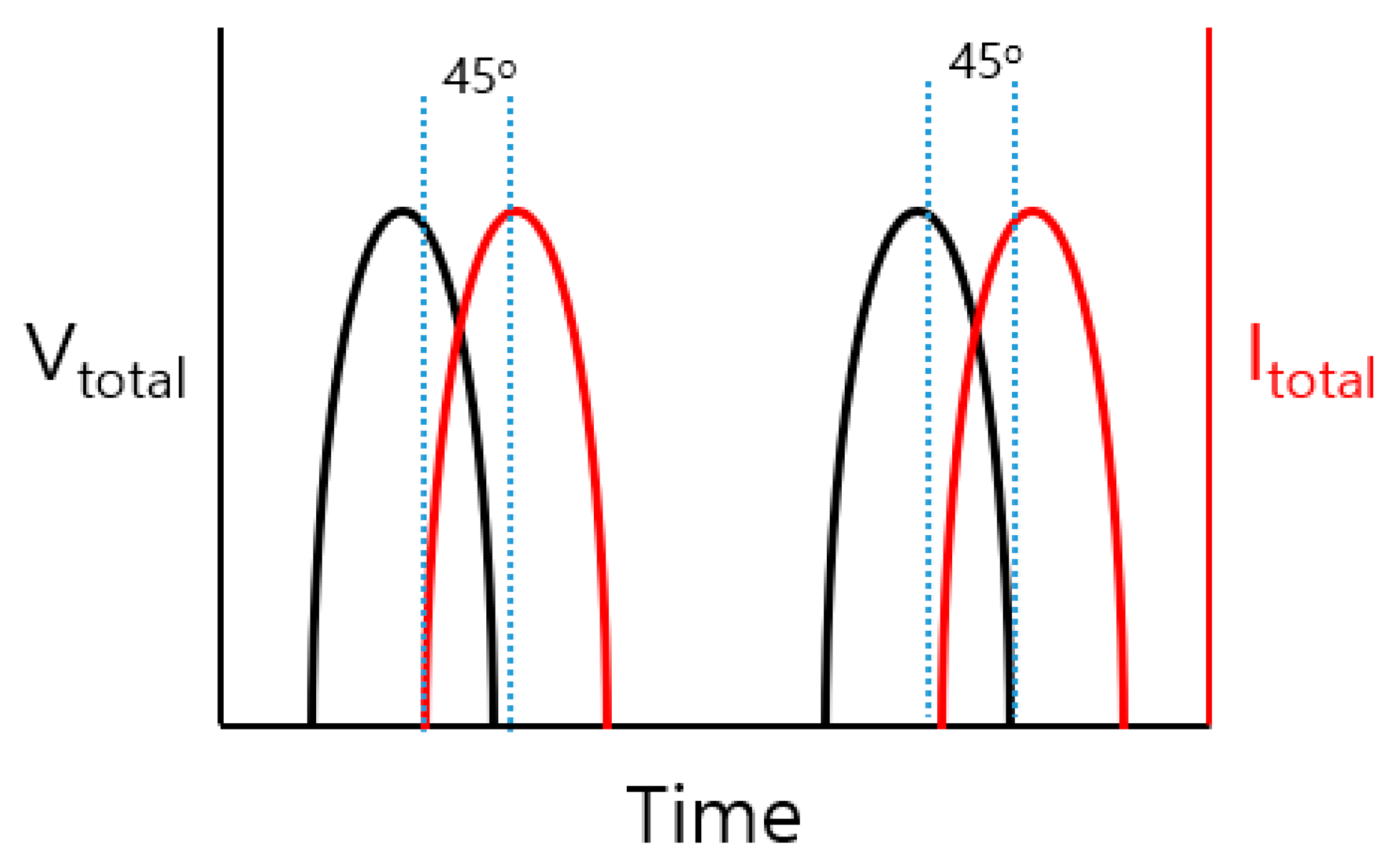
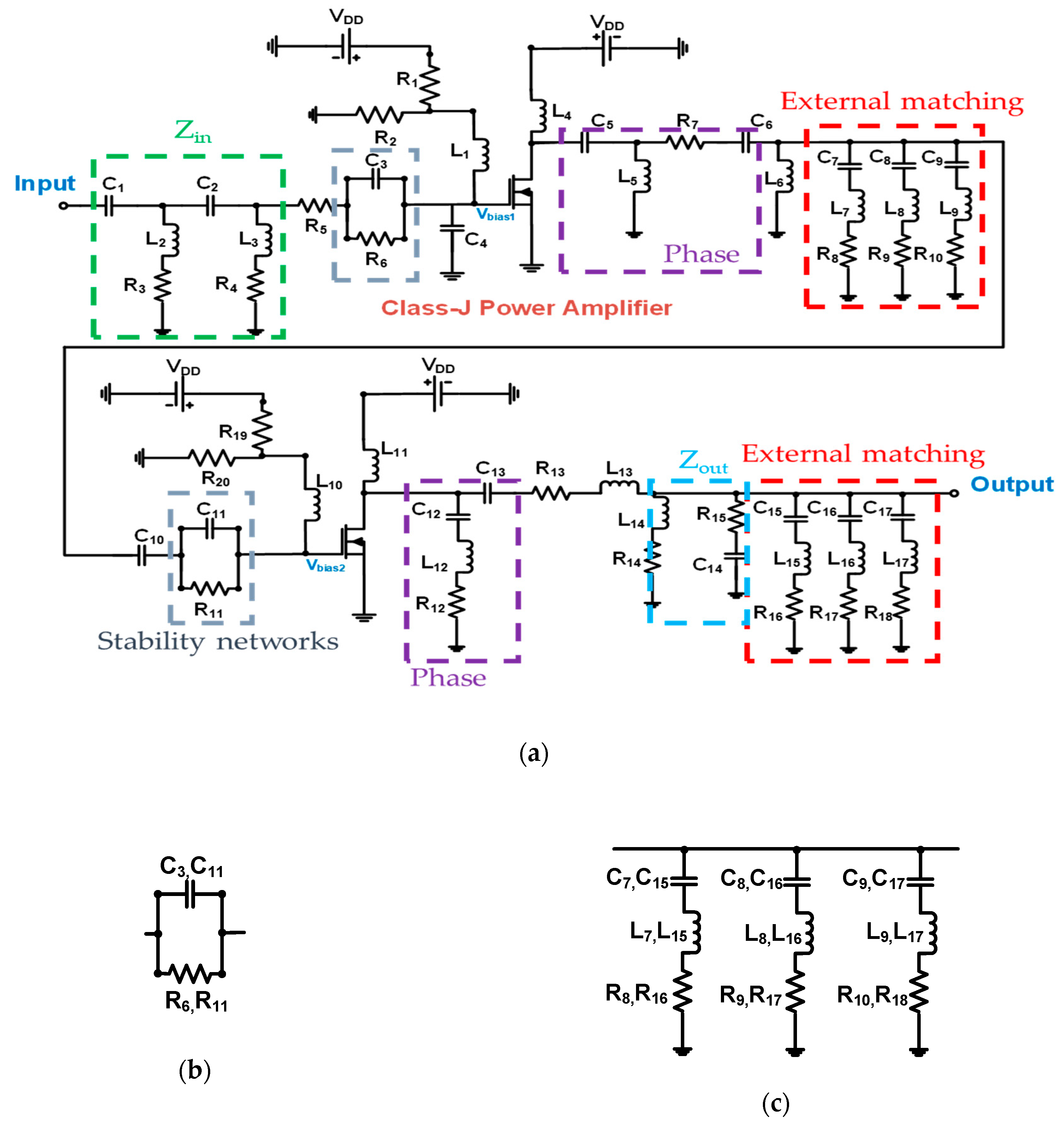
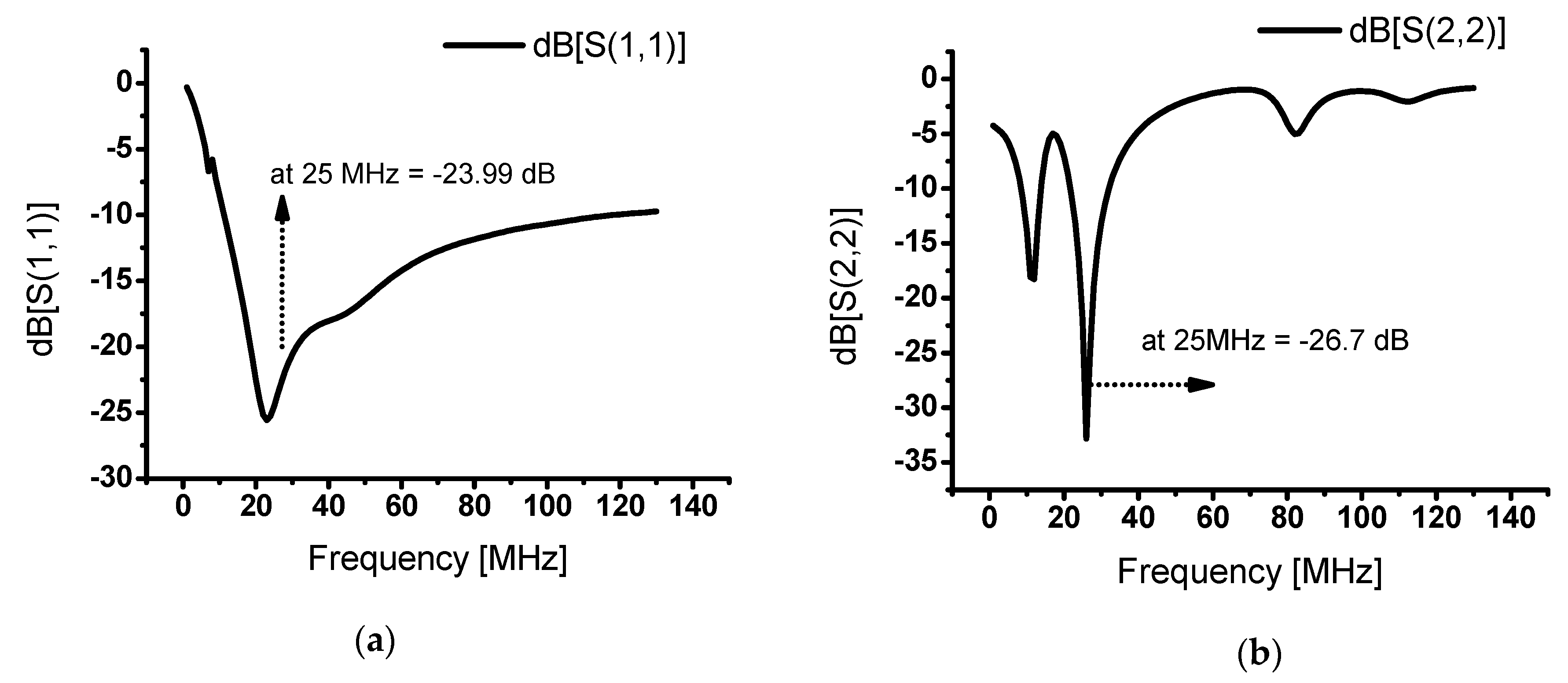
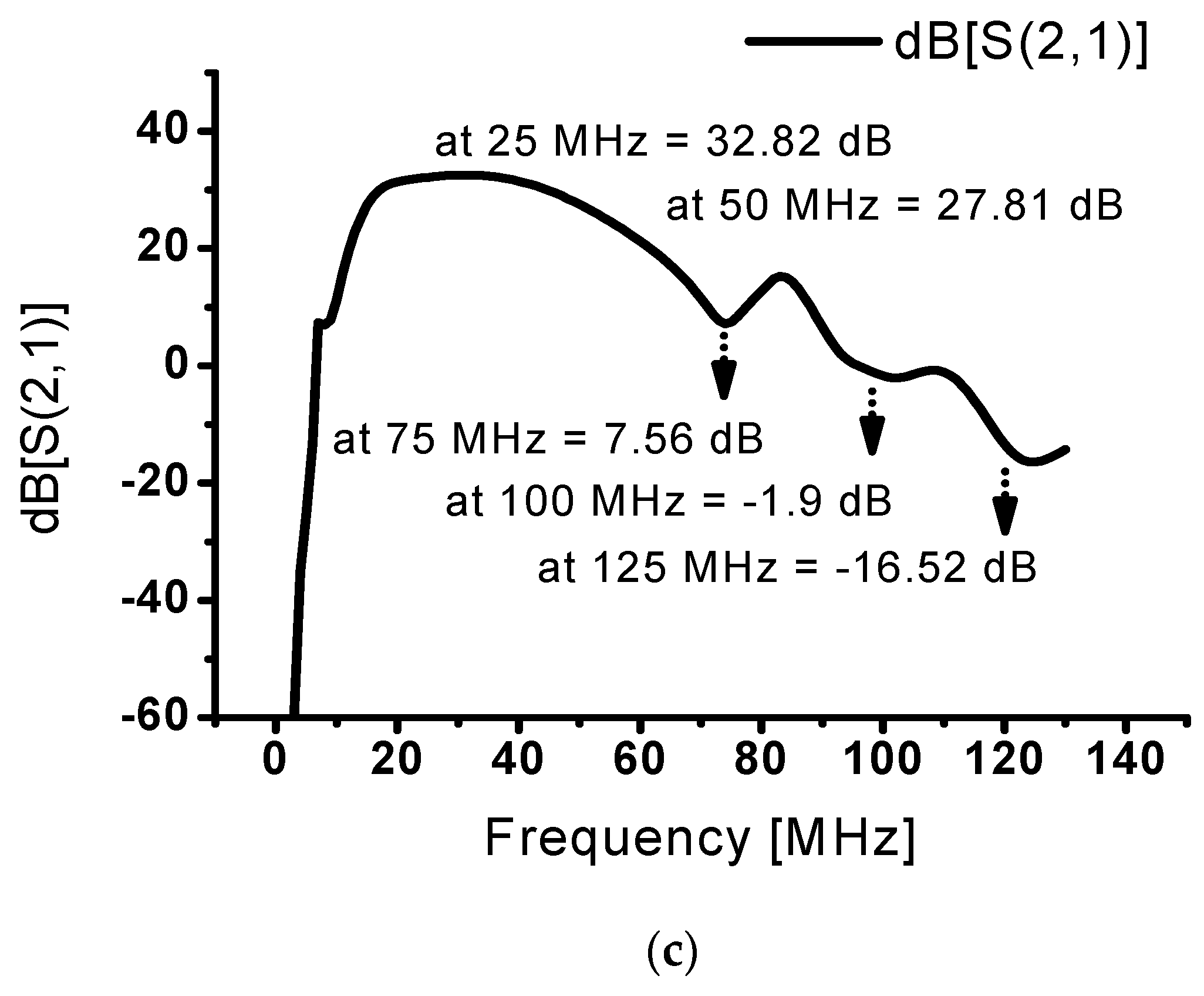

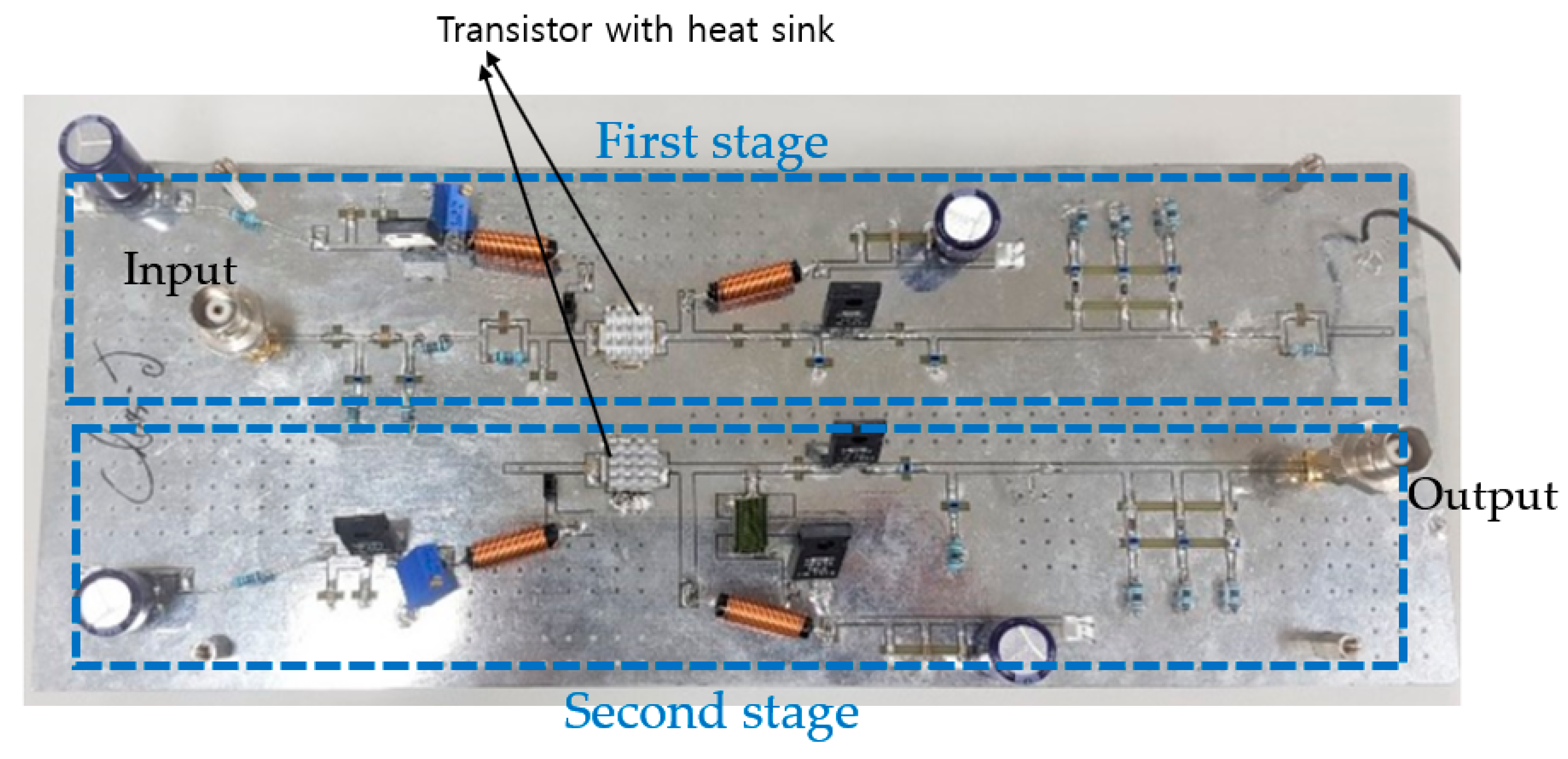
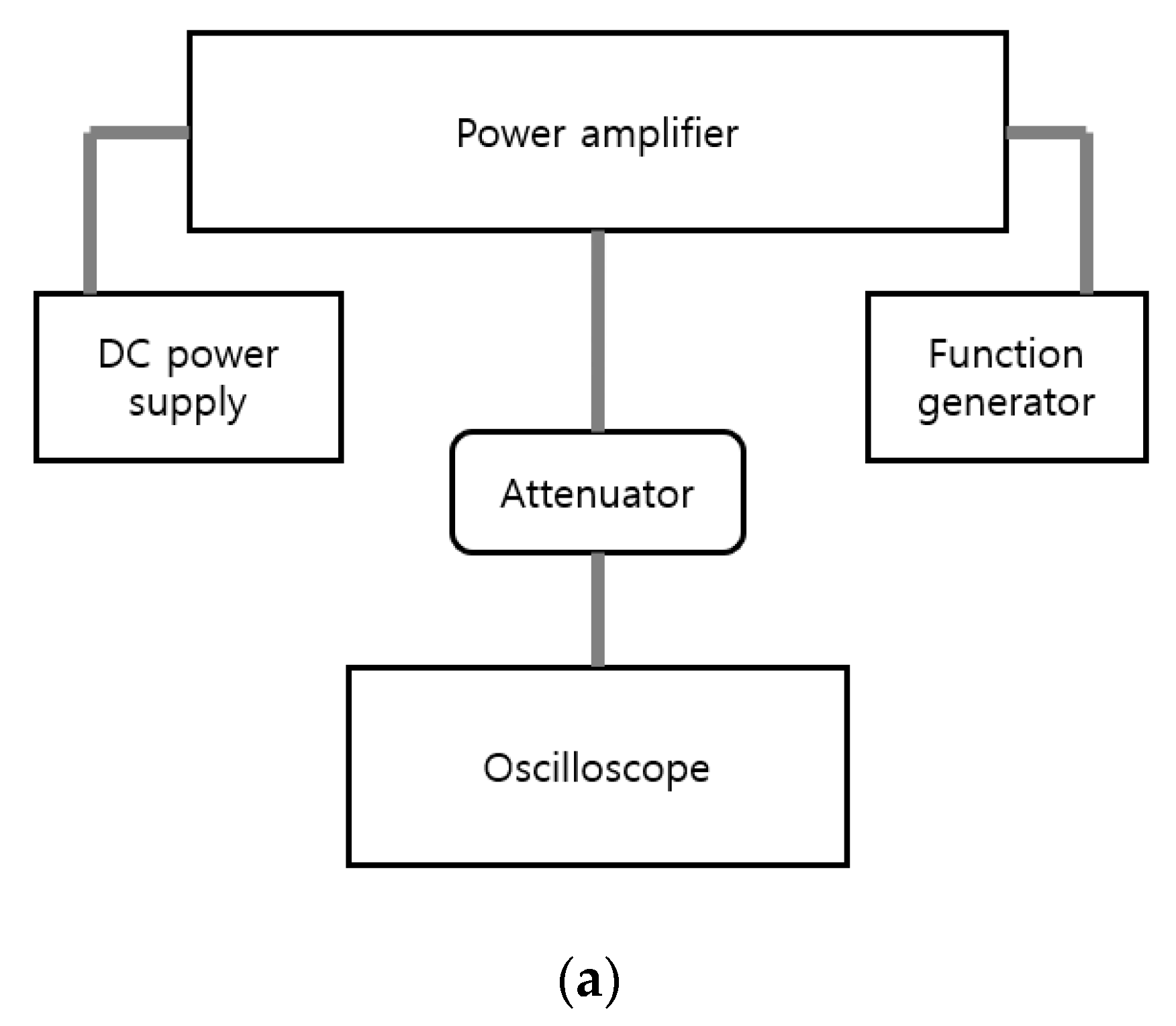

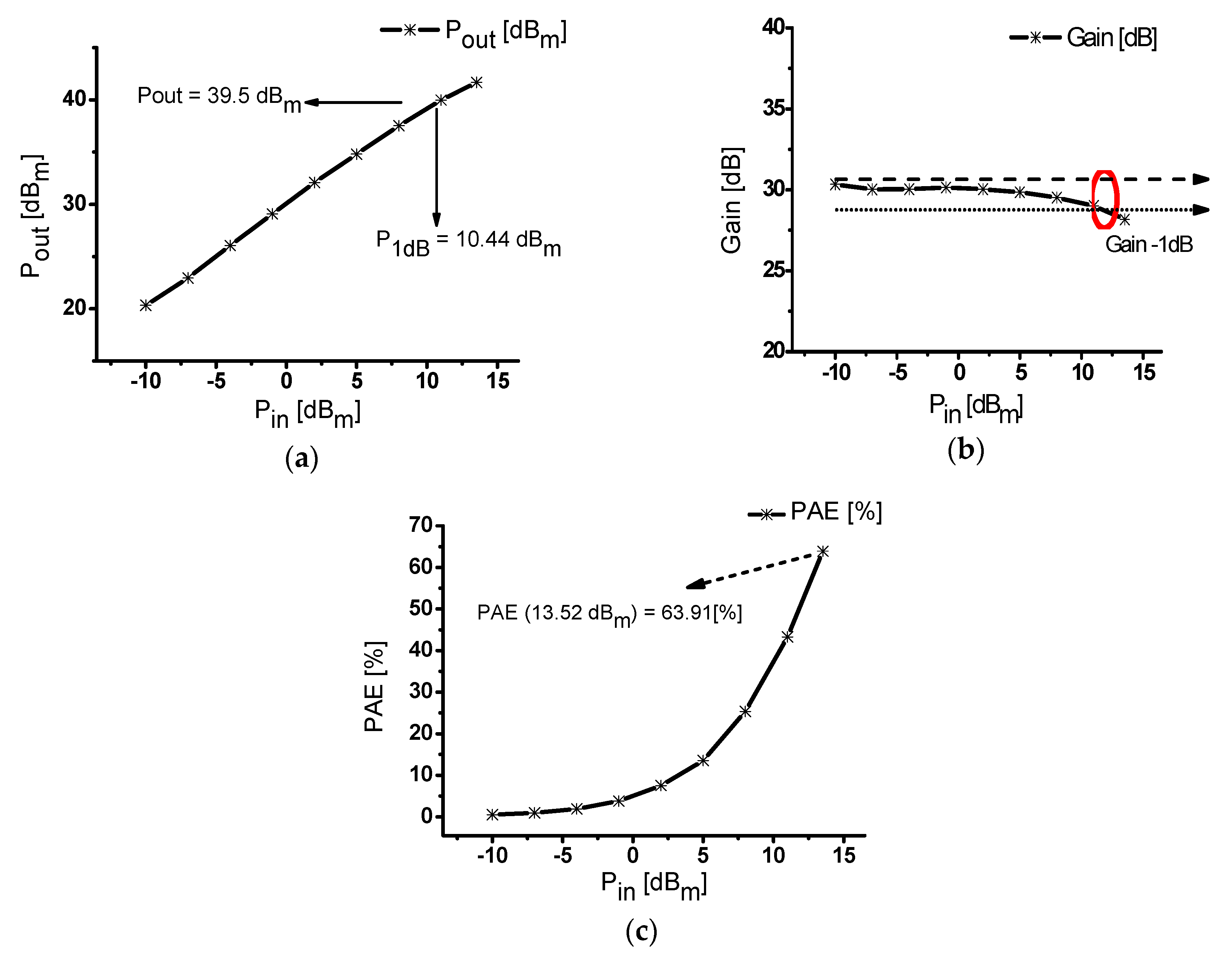
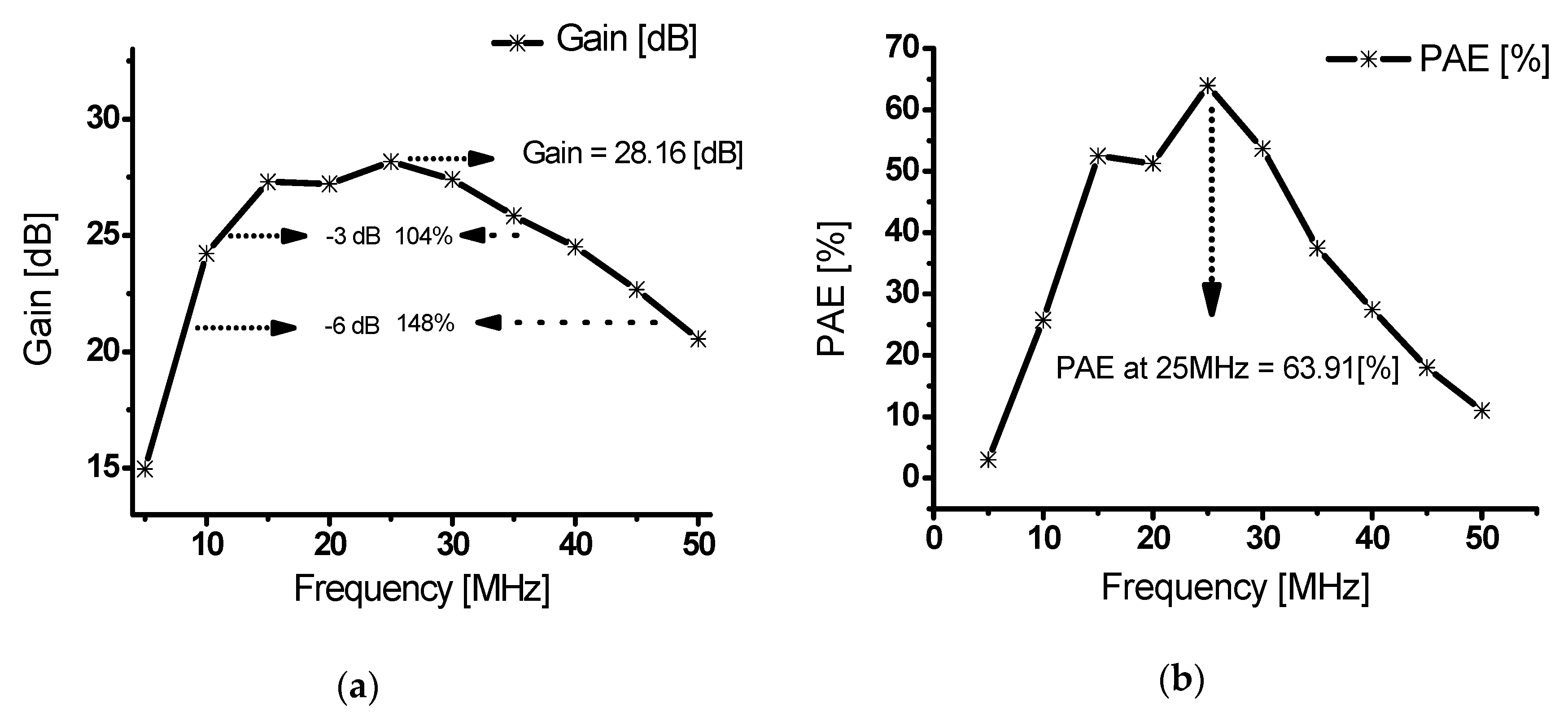
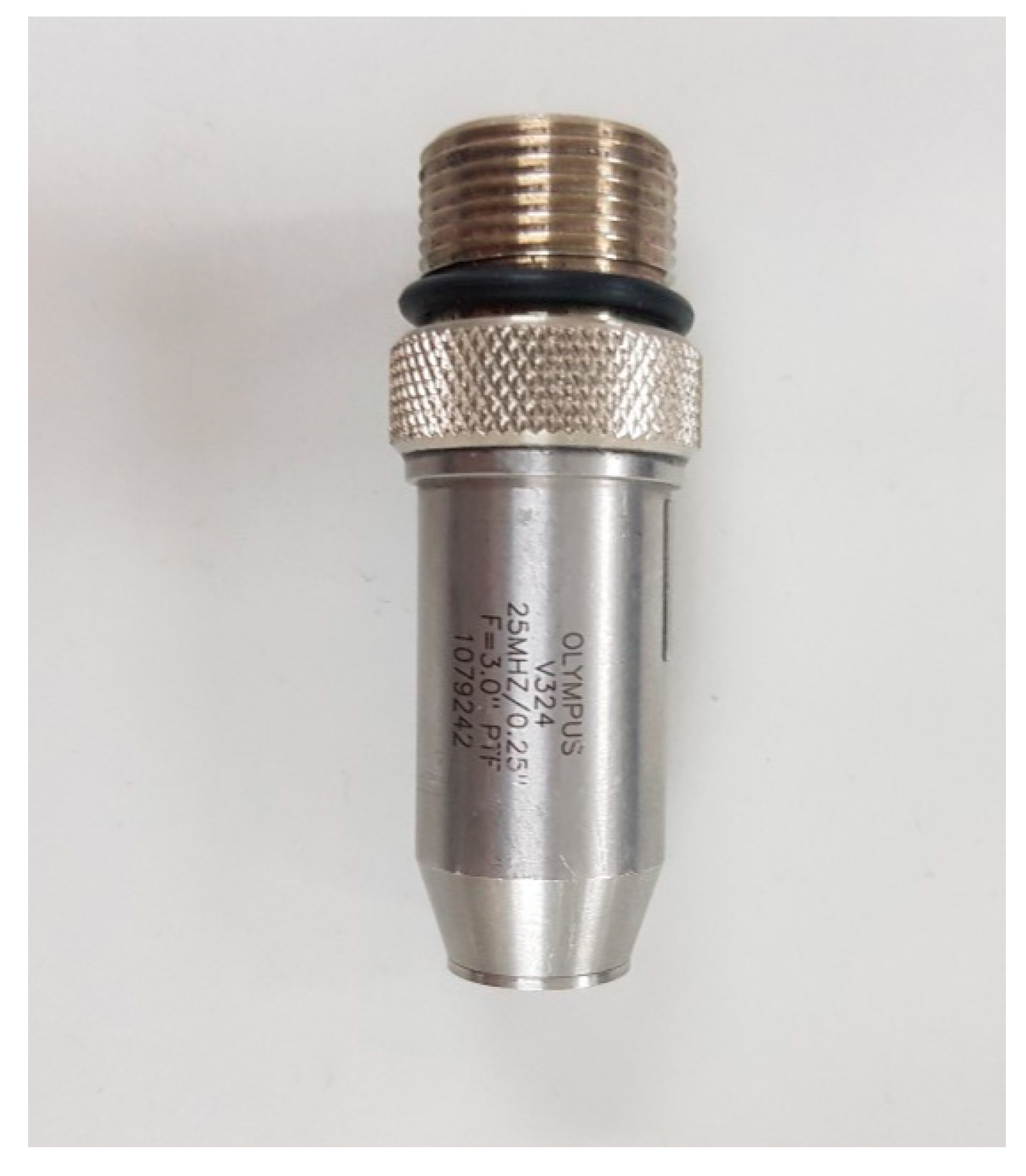
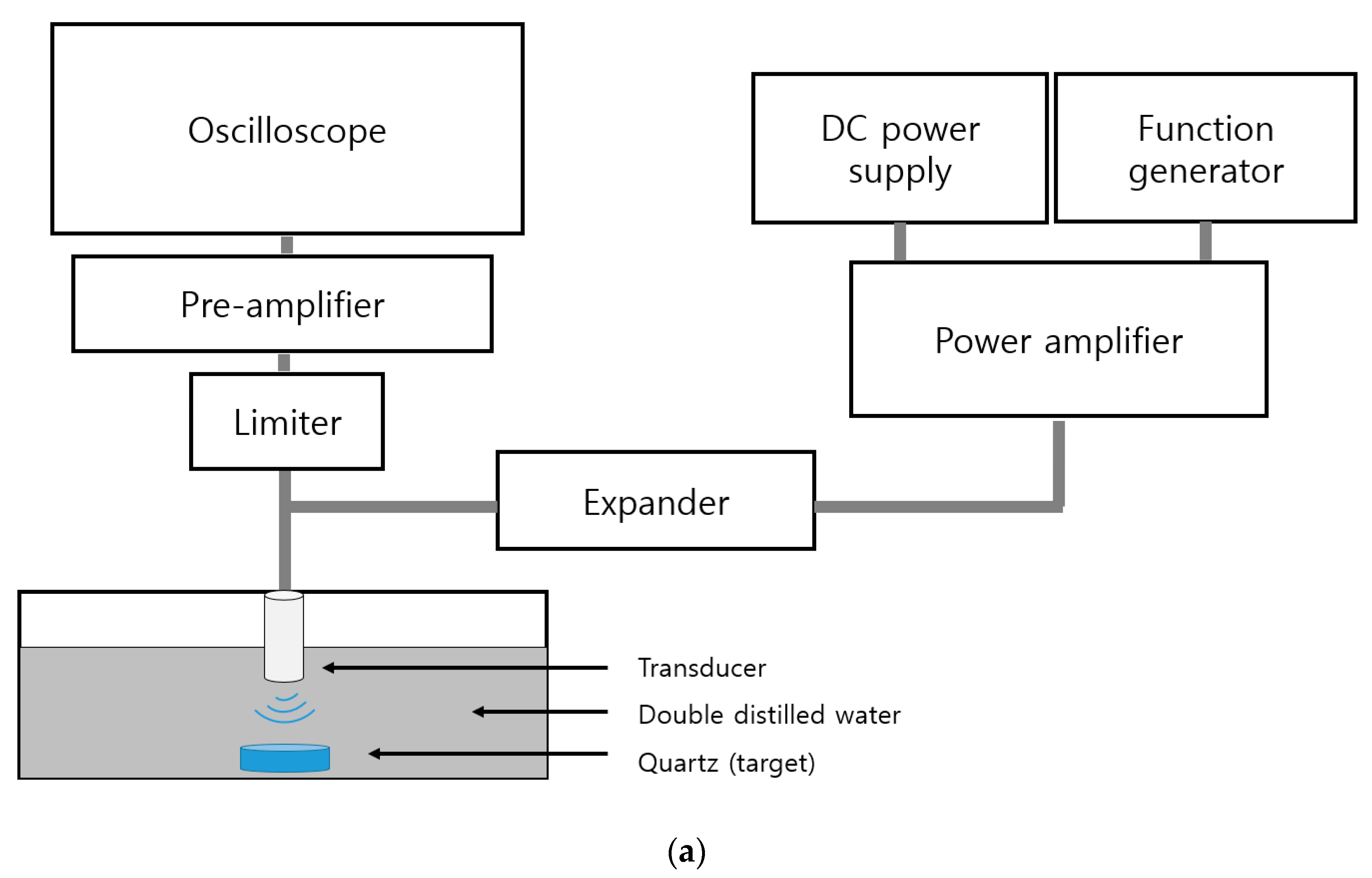



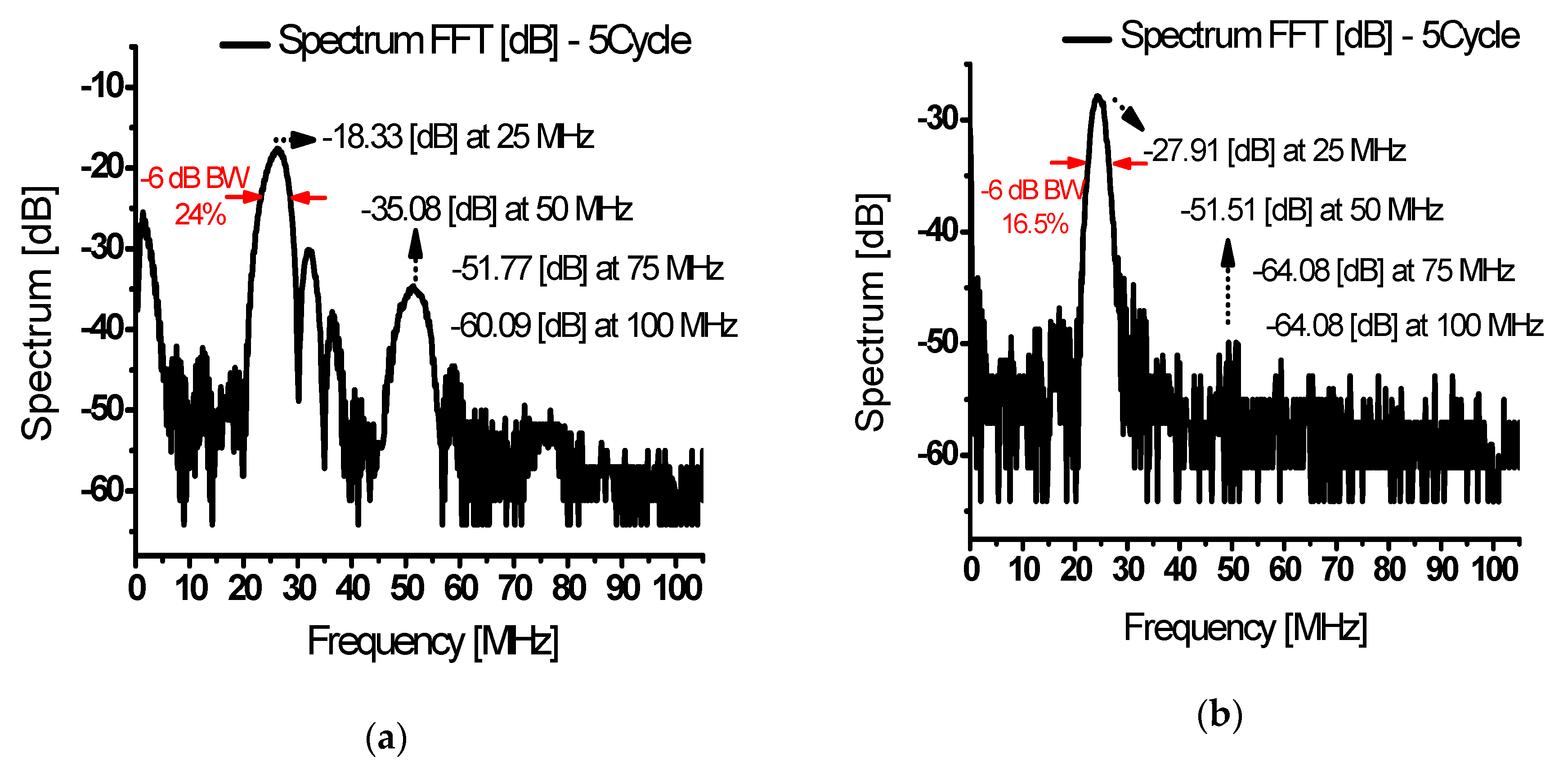
| Component | Description | Component | Description |
|---|---|---|---|
| C1 | 390 pF | L1, L4, L10, L11 | 1 μH |
| C2, C3, C10, C11 | 1000 pF | L2, L3, L6, L13, L14 | 470 nH |
| C4 | 27 pF | L5, L8 | 68 nH |
| C5 | 1500 pF | L7 | 100 nH |
| C6 | 270 pF | L9, L17 | 39 nH |
| C7, C15 | 39 pF | L12 | 390 nH |
| C8, C9 | 41 pF | L15 | 120 nH |
| C12 | 820 pF | L16 | 56 nH |
| C13 | 120 pF | R1 | 650 Ω |
| C14 | 750 pF | R2 | 180 Ω |
| C16, C17 | 43 pF | R3, R4 | 110 Ω |
| R8, R9, R10 | 3 Ω | R5 | 120 Ω |
| R16, R17, R18 | 3 Ω | R6, R11 | 100 Ω |
| R12, R14 | 10 Ω | R7 | 30 Ω |
| R13 | 4 Ω | R15 | 80 Ω |
| R19 | 2 kΩ | R20 | 360 Ω |
| Pin [dBm] | Pout [dBm] | Gain [dB] | PAE [%] |
|---|---|---|---|
| −10 | 20.34 | 30.34 | 0.51 |
| −7 | 22.95 | 30.03 | 0.93 |
| −4 | 26.06 | 30.04 | 1.88 |
| −1 | 29.08 | 30.14 | 3.78 |
| 2 | 32.08 | 30.04 | 7.53 |
| 5 | 34.81 | 29.85 | 13.54 |
| 8 | 37.53 | 29.52 | 25.34 |
| 11 | 39.99 | 29.01 | 43.29 |
| 13.52 | 41.69 | 28.17 | 63.91 |
| Frequency [MHz] | Output [VP-P] | Gain [dB] | PAE [%] |
|---|---|---|---|
| 5 | 16.8 | 14.96 | 2.97 |
| 10 | 48.8 | 24.23 | 25.76 |
| 15 | 69.6 | 27.31 | 52.49 |
| 20 | 68.8 | 27.21 | 51.27 |
| 25 | 76.8 | 28.16 | 63.91 |
| 30 | 70.4 | 27.41 | 53.70 |
| 35 | 58.8 | 25.85 | 37.44 |
| 40 | 50.4 | 24.51 | 27.48 |
| 45 | 40.8 | 22.67 | 17.97 |
| 50 | 32.0 | 20.56 | 11.02 |
| Parameters | Class-C | Class-D | Class-E | Our Work |
|---|---|---|---|---|
| Input voltage | 5 [VP-P] | 2.5 [VP-P] | 5 [VP-P] | 3 [VP-P] |
| Output power | 30 [dBm] | 39.54 [dBm] | 29.03 [dBm] | 41.69 [dBm] |
| Frequency | 25 [MHz] | 41 [KHz] | 1010 [KHz] | 25 [MHz] |
| PAE | – | – | – | 63.91[%] |
| Drain efficiency | – | – | 90[%] | – |
| Application | Piezoelectric transducer | Langevin transducer | MRI-compatible Piezoelectric transducer | Piezoelectric transducer |
© 2020 by the authors. Licensee MDPI, Basel, Switzerland. This article is an open access article distributed under the terms and conditions of the Creative Commons Attribution (CC BY) license (http://creativecommons.org/licenses/by/4.0/).
Share and Cite
You, K.; Kim, S.-H.; Choi, H. A Class-J Power Amplifier Implementation for Ultrasound Device Applications. Sensors 2020, 20, 2273. https://doi.org/10.3390/s20082273
You K, Kim S-H, Choi H. A Class-J Power Amplifier Implementation for Ultrasound Device Applications. Sensors. 2020; 20(8):2273. https://doi.org/10.3390/s20082273
Chicago/Turabian StyleYou, Kiheum, Seung-Hwan Kim, and Hojong Choi. 2020. "A Class-J Power Amplifier Implementation for Ultrasound Device Applications" Sensors 20, no. 8: 2273. https://doi.org/10.3390/s20082273
APA StyleYou, K., Kim, S.-H., & Choi, H. (2020). A Class-J Power Amplifier Implementation for Ultrasound Device Applications. Sensors, 20(8), 2273. https://doi.org/10.3390/s20082273




